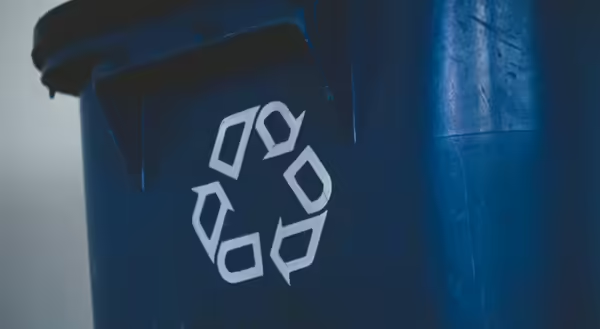
As I pull into my driveway on Wednesday night, I realize it’s time to take the garbage and recycling to the curb. My neighbors have done the same, and our streets are lined with containers holding our discarded materials ready to be picked up and taken to other destinations. Curbside recycling is one positive step in resource conservation and managing our community’s waste, but are you certain the materials in your recycling bin can be recycled?
Many items are easily recycled, such as most cardboard, paper, metal cans, and some plastic bottles. However, just because you see the familiar triangle symbol of chasing arrows does not automatically mean the materials are recyclable.
In 1988, Resin Identification Codes were created solely to identify the type of plastic resin was used in a manufactured product. The current standard for Resin Identification Codes includes:
Equilateral triangle
Resin Identification Number
Abbreviated Term for a polymeric material
Materials can be composed of several polymers, and some are more environmentally friendly than others. Plastic products are categorized with numbers 1-7. What do those numbers mean?
1 PET
1 PET is commonly found in disposable food and drink containers, such as water and soda bottles. It can also be found in prepared and frozen food containers. 1 PET plastic is very common, easily recyclable, and accepted by most municipal recycling programs.
2 HDPE
2 HDPE is a non-transparent plastic, often found in household cleaner bottles, some food containers, and specific types of cutting boards. 2 HDPE is also widely accepted by municipal recycling programs.
3 PVC
3 PVC is found in children’s toys along with a variety of bottles, including detergent and shampoo. 3 PVC is more difficult to recycle than PET 1 and HDPE 2.
4 LDPE
4 LDPE is a flexible plastic commonly used to make thin plastic bags, which are often hard to recycle. Number 4 plastics may be accepted at some local recycling systems, but it is important to check if they are accepted at your specific local recycling center. Otherwise, they can clog up machines.
5 PP
5 PP is the plastic found in straws, soft-drink cups, and some food containers. It can be difficult to sort these items, making it more difficult to recycle.
6 PS
6 PS plastic includes Styrofoam, which is used in takeout containers and disposable cups. 6 PS is generally not accepted by recycling facilities.
Category 7
Category 7 is listed as Other, acting as a catch-all for other plastics, including bisphenol A (BPA), polycarbonate (ex, eyewear lenses), and bio-based plastics. These are not recycled plastics.
In general, the higher the number, the harder the plastic is to recycle. Many residential recycling facilities can accept recycled materials with #1, #2, and #5. Be sure to check with your local recycling facility to know what numbers they can accept. If their facility cannot accept what is placed in the recycling bin, a number of extra steps have to be taken as it requires extra effort to sort, incorrect materials can clog recycling machinery, and incorrect products can result in extra costs of transporting the unacceptable materials to another site.
Recycling is a positive way to reduce landfill waste, but it is important to recognize steps we can take before that point. Refusing materials we do not need, reducing consumption, reusing items, and repurposing resources should all be considered before tossing something in the recycling or the trash. By understanding what can and cannot be recycled in our curbside bins, we can all play a part in creating a more sustainable community.